Ever wonder how to make hard kombucha (i.e. kombucha with more alcohol in it)? We’re breaking down the basics to alcoholic kombucha. It’s easier than you would think!
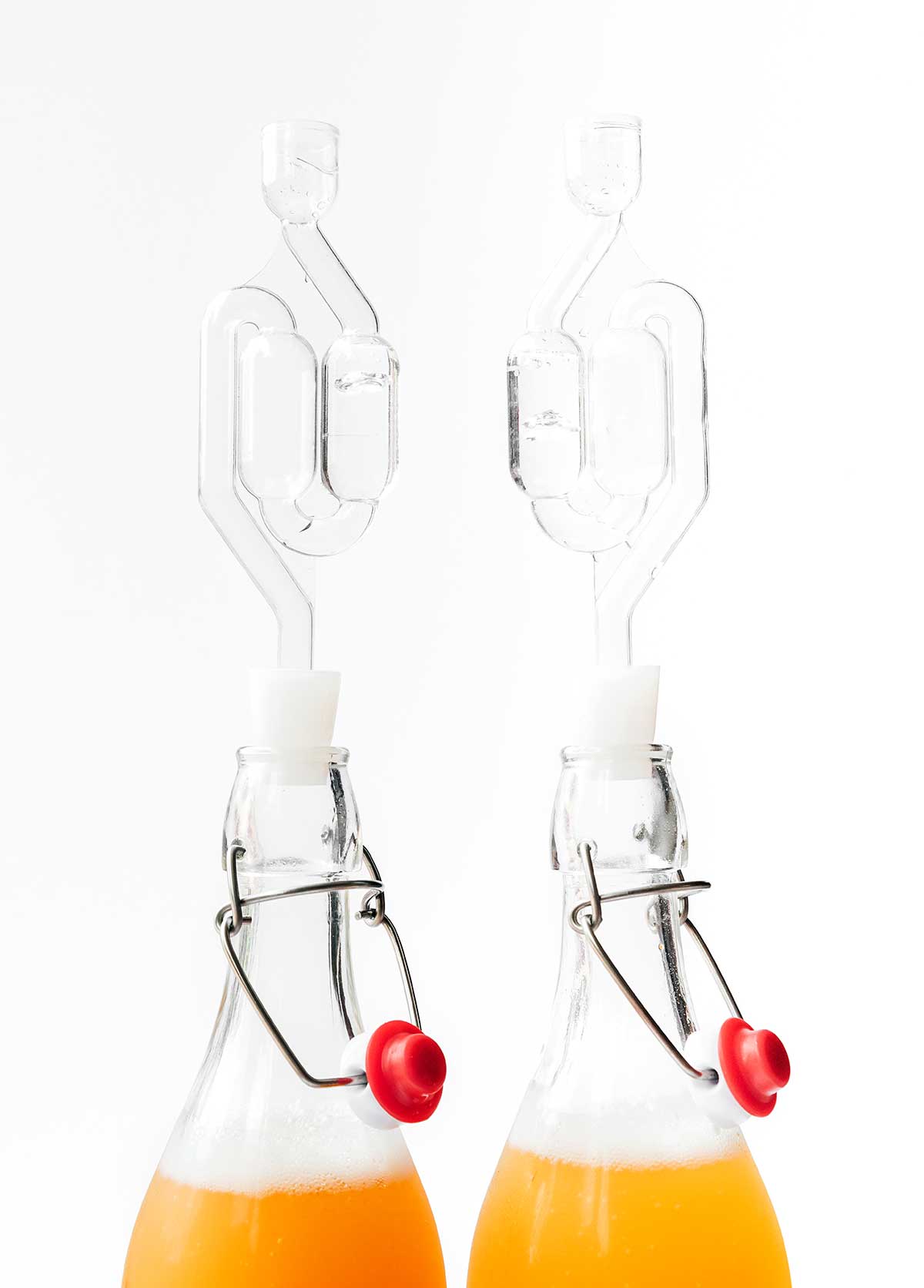
The basics of hard kombucha
Kombucha naturally contains some alcohol (about 0.5%). This is due to the reaction between the naturally occurring yeast in the kombucha, which produces trace amounts of ethanol (alcohol).
Typical kombucha yeast strains do not produce much alcohol on their own, so what do you do if you want to increase the amount of alcohol in your kombucha? Add a different kind of yeast!
By adding a different strain of yeast, such as champagne yeast, to your kombucha, you can make a hard kombucha beverage with a higher ABV (alcohol by volume), around 5%!
After much experimentation (and years of brewing non-alcoholic kombucha to help guide me), I’ve finally landed on the method of brewing hard kombucha that’s both easy and reliable. Let’s brew!
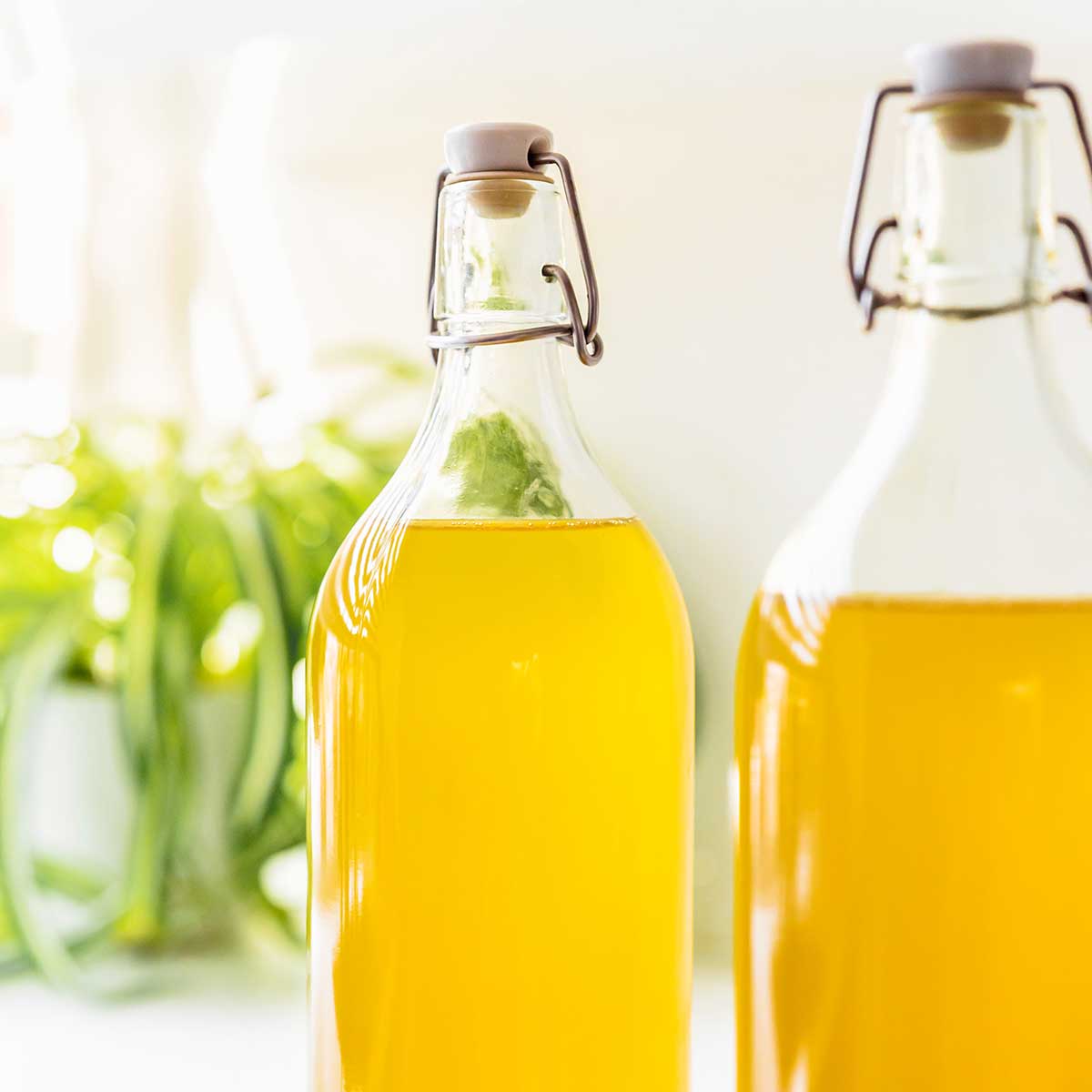
Main Ingredients & Supplies needed for alcoholic kombucha
Kombucha from a first fermentation
First up, you’ll need some kombucha! Take your batch of kombucha straight from the first fermentation to make hard buch. (Here’s how to make kombucha in the first fermentation.) You can use kombucha made from green or black tea here.
Yeast
Adding an additional strain of yeast (different from the kombucha yeast) will help drive up the alcohol content of your kombucha. The type of yeast you choose to use will impact the finished flavor. Some options include:
- Champagne yeast (like this EC-1118 dry wine yeast), which gives a distinctly champagne flavor to your hard kombucha
- Ale yeast (like this SafAle US-05), which has a more neutral flavor
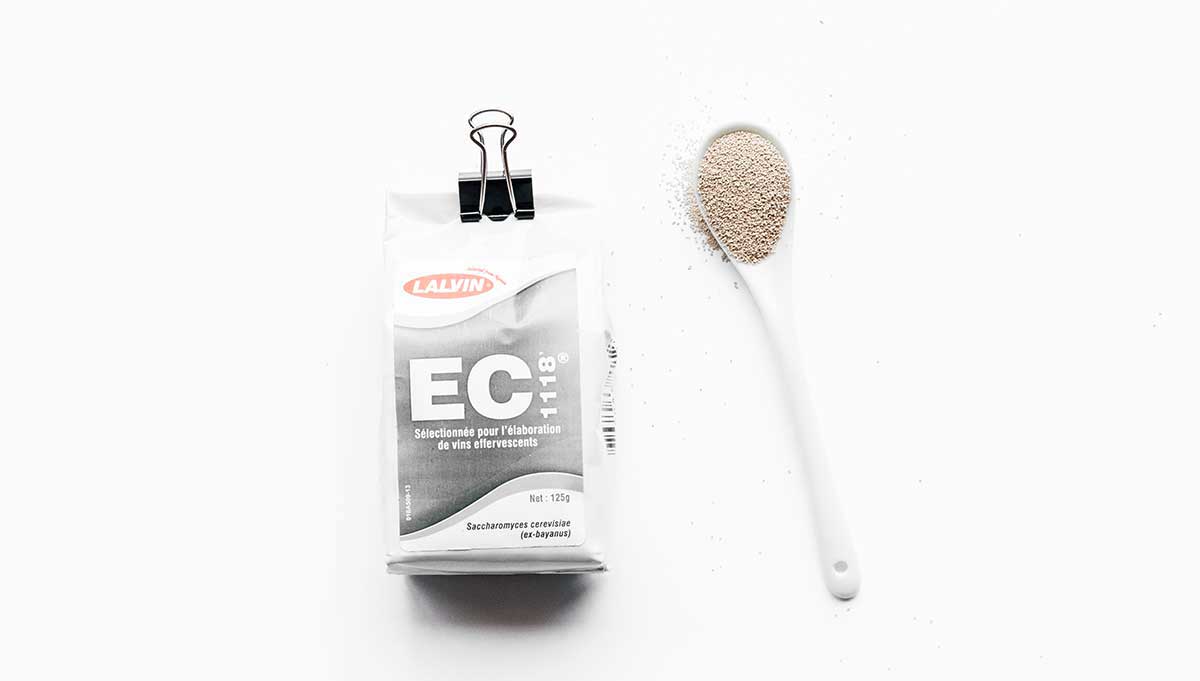
Airlock
The final extra piece of gear you’ll need to brew hard kombucha are airlocks. These effectively let carbonation escape without letting oxygen in.
“But doesn’t kombucha need oxygen?” Good question! When making kombucha in the first fermentation, the bacteria need oxygen to ferment properly. But once the kombucha is finished and you’re ready to booze it up, you’ll want to prevent oxygen from getting to the bacteria so that the bacteria don’t eat the alcohol you’re making! (More on the relationship between bacteria and alcohol in kombucha here.)
A lid won’t work here because you need to allow for air to leave the bottle!
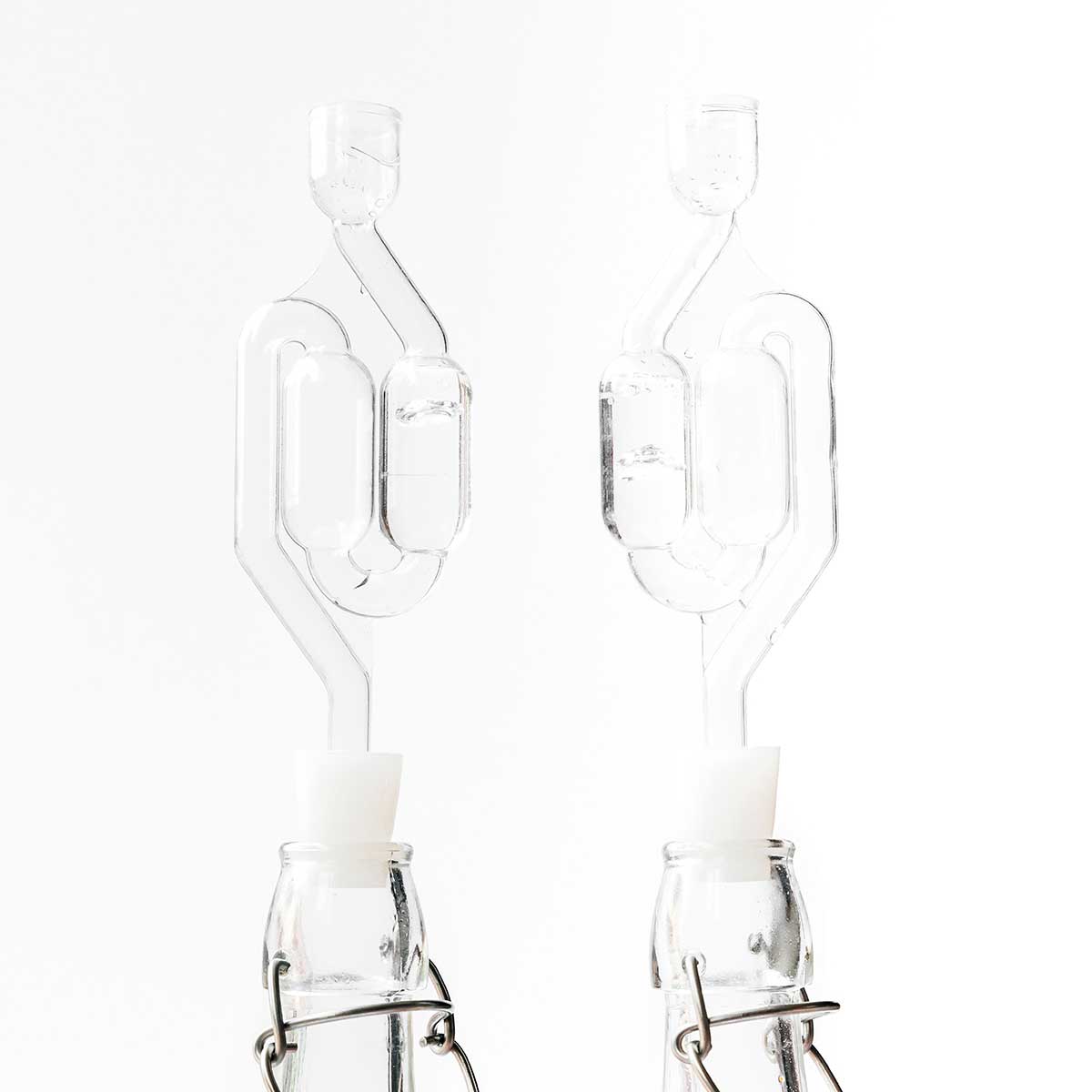
How to make hard kombucha
The process of making hard kombucha is a little different from making traditional kombucha in that we’re adding an extra step in the middle. It goes something like this!
- 1st Fermentation: Make the kombucha (6 to 10 days). This is when you turn sweet tea into kombucha!
- 2nd Fermentation: Make it boozy by adding yeast and sugar, then let alcohol develop (7 to 14 days)
- 3rd Fermentation (optional): Add flavors and seal shut to carbonate (3 to 10 days)
Easy enough, right? Let’s dig into the details!
1st Fermentation: Make the kombucha
In the first step, you’re making kombucha just as usual. You’ll just put sweetened tea, starter kombucha, and a SCOBY (symbiotic culture of bacteria and yeast) into a large jar and let it ferment for 6 to 10 days until you reach your desired flavor (a mix of sweet and tart). Get instructions for the first fermentation here.
2nd Fermentation: Make it Boozy
In the second step, we’ll add a slurry of yeast, sugar, and water, which will increase the alcohol content of your brew. You’ll need:
- 1 cup hot water
- 1 cup white sugar
- 1 tsp yeast (champagne or ale yeast, see notes above)
- 1 gallon of kombucha (from first fermentation)
- Airlocks
1. Yeast Slurry: Stir together the hot water and sugar until sugar is dissolved. Let it cool to lukewarm, then stir in yeast. Allow the yeast to activate for 5 minutes, until bubbles form and the yeast is frothy.
2. Bottle: Meanwhile, transfer kombucha to bottles or a growler (or any vessel with an opening that will fit your airlocks. Portion yeast slurry equally into each bottle of kombucha.
3. Airlock: Fill airlocks with water (to the designated line – you may need to read the instructions for your particular airlocks). Place airlocks onto each bottle.
4. Ferment: Set bottles somewhere dark and room temperature, and let ferment for 7 to 14 days. It’s ready when the flavor is somewhat dry and boozy! If you’re not moving on to the next step (adding flavor), seal the bottles shut and transfer to the fridge to stop the fermentation process.
“I’ve made it and it’s WONDERFUL!
I was wondering what you needed to do to raise the alcohol content. More Yeast? More sugar?”
3rd FERMENTATION: Add flavor
In this final (and optional) step, you can add flavors to give your hard kombucha a fun taste. This is the equivalent of the “second fermentation” in traditional kombucha brewing. You’ll just add whatever flavors you want to your bottle (like pureed fruit, fruit juice, ginger, herbs, or spices), then seal it shut. Let sit for 3 to 10 days, until bubbly and carbonated. Transfer bottles to the fridge to stop the fermentation process. Check out all of our flavor recipes here!
How much alcohol is in my hard kombucha?
The amount of alcohol in your finished hard kombucha will depend on how much sugar you added in the 2nd fermentation. Typically each 1 cup of sugar will give you about 4% ABV. Increasing this ratio and adding more sugar will result in a higher alcohol level.
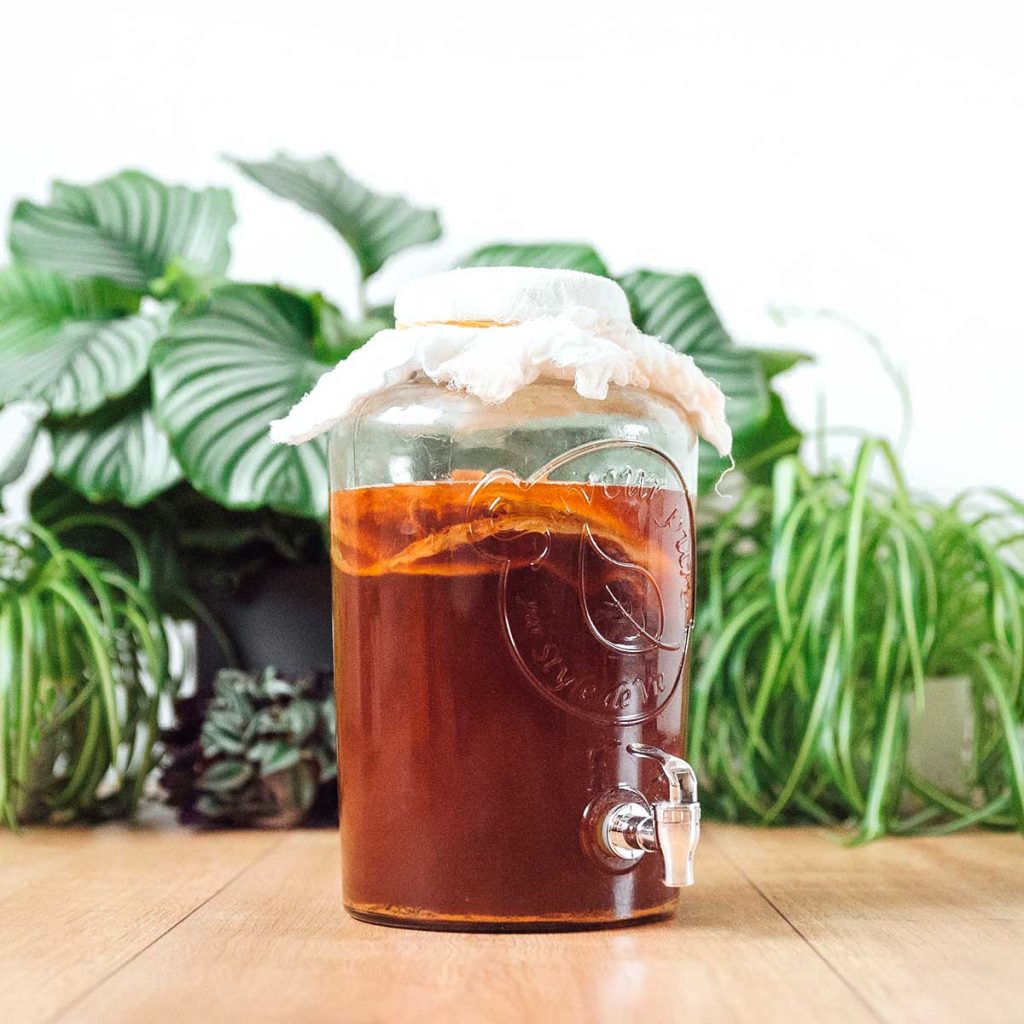

How To Make Hard Kombucha
Ingredients
- 1 cup hot water
- 1 cup white sugar
- 1 tsp champagne or ale yeast
- 1 gallon unflavored kombucha, from a first fermentation
Instructions
- Yeast Slurry: Stir together the hot water and sugar until sugar is dissolved. Let it cool to lukewarm, then stir in yeast. Allow the yeast to activate for 5 minutes, until bubbles form and the yeast is frothy.
- Bottle: Meanwhile, transfer kombucha to bottles or a growler (or any vessel with an opening that will fit your airlocks. Portion yeast slurry equally into each bottle of kombucha.
- Airlock: Fill airlocks with water (to the designated line – you may need to read the instructions for your particular airlocks). Place airlocks onto each bottle.
- Ferment: Set bottles somewhere dark and room temperature, and let ferment for 7 to 14 days. It’s ready when the flavor is somewhat dry and boozy! If you’re not moving on to the next step (adding flavor), seal the bottles shut and transfer to the fridge to stop the fermentation process.
- Flavor (optional): At this point you can flavor your bottles however you want! See our favorite kombucha flavors here.
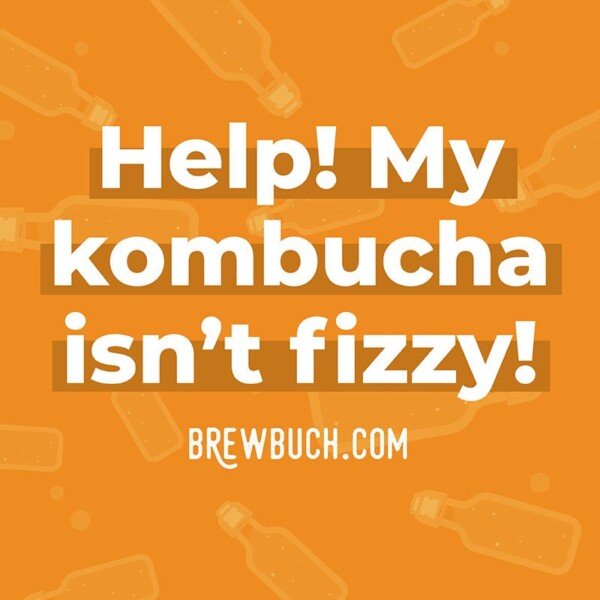
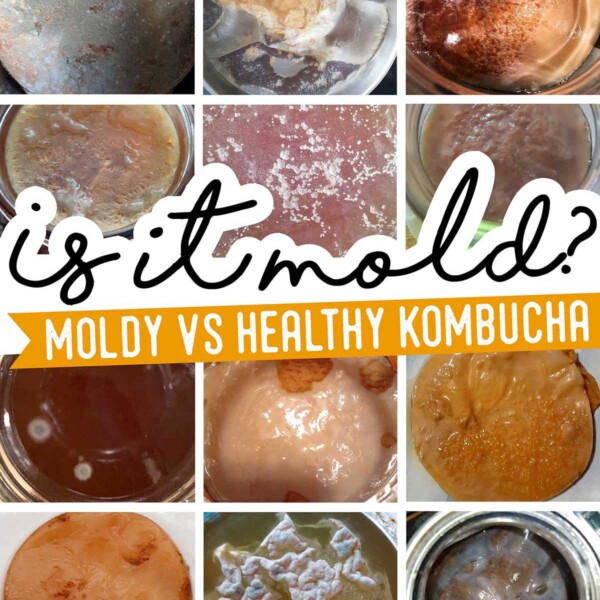

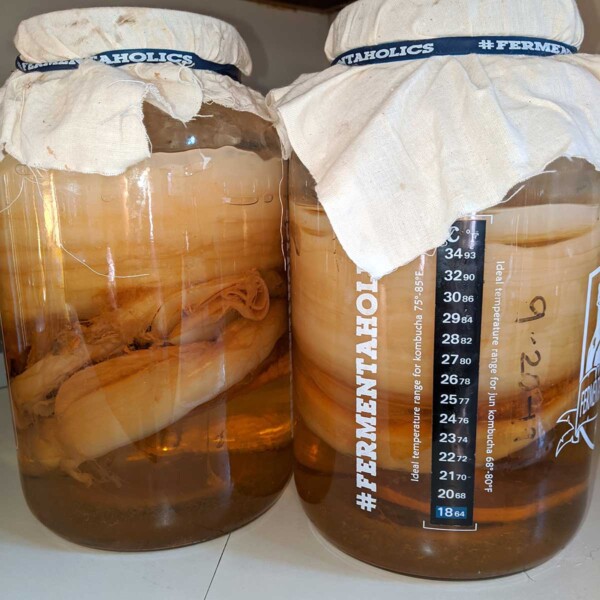
Sarah…
When I make the slurry and put it in the bottles, it rises to the top to make a “pl;lug”. Is that normal? I’ve tried to get it to mix in….but eventually rises to the top again, and 2 weeks later, my kombucha is still super sweet (used 1 cup sugar and only had 6 airlocks) and not boozy. Any hints? Seems like it’d be easier to make a gallon in one large jug rather than in separate bottles.
Thanks for the tips!
You could try gently flipping it over everyday to keep it from rising like that! 😀
Thanks Sarah – appreciate your advice.
Hi Sarah
When making hard kombucha, should you stir the vessel at the end of the 3rd fermentation (which has wine yeast in it) before bottling (in the same way you would do at the end of the 2nd fermentation)?
Yes that would be best! 😀
Oh my gosh, I didn’t even know this was a thing! I just started my next round of continuous brew today, and am going to order some supplies to try this.
I always do my second fermentation in flip-top 750mL bottles. Depending on what I have in there, I burp 1-2x/day. If I were to flavor on the 3rs ferment of hard kombucha, would I still follow my same burping routine?
Also, how many 750mL bottles would that 1c sugar/1tsp yeast ratio cover? Could I double it if I wanted to raise the ABV? So excited!
I would still burp them! And should cover about 6 bottles if my math is right. Increasing the sugar would increase the finished alcohol level 😀
Hi Sarah
I’ve only just found your website and love the look of all your recipes. I’ve been brewing non-alcoholic kombucha for about 6 months and I’m about to progress to hard kombucha. I have usually brewed enough non-alcoholic for normal daily consumption. If I step up production how long will I be able to keep hard kombucha after the 3rd fermentation? Can it mature in bottles like wine or champagne? Would I need to keep it in the fridge? Many thanks.
I don’t think it would mature quite the same as wine, and I would keep it in the fridge to stop the fermentation (and thus stop bottles from exploding).
Hey there!
Thank for sharing your experience.
I have a question.
If I add more sugar and water in the 3rd fermentation the alcohol level will be the same?
More sugar will likely increase the alcohol content a bit!
Hello! I’ve tried making this twice now, but both times after two weeks the kombucha has still been extremely sugary sweet. It’s not drinkable.
I’m thinking there is something going wrong during the activation of the yeast.
I’m trying to save my second attempt, so as to not waste further precious kombucha, by reactivating 1 tsp ale yeast in 1 cup water between 90-100 degrees without the sugar; I will then just try pouring the yeast and water slurry into the overly sweet, and definitely not hard, kombucha. I have no idea if this will work but giving it a try.
Any words of widsom?
Perhaps try a different yeast? And otherwise, make sure your kombucha is pretty tart before adding the yeast slurry (aka before the second ferm).
I am so excited to try this. We are doing homemade Christmas gifts this year! A couple of quick questions:
Will it be a little carbonated?
I love grapefruit, do you have any recipes for adding fresh grapefruit juice?
Thank you,
Brandi
Yep, if you do a third fermentation where you seal off the bottles it should carbonate. And here’s how we add grapefruit.
To what consistency do I stir in the yeast? Should it dissolve like the sugar or should I gently stir it throughout the batch of kombucha. Thanks.
Just dissolve it like you do the sugar! 😀
Hey Sarah, great instructions, really appreciate all the info! One question, do you take any gravity measurements or anything to confirm the second fermentation is finished? Always cautious about accidentally creating bottle bombs if there’s still too much sugar left when doing the final bottling. Also does any additional sugar need to be added in the third step to carbonate, or should there be enough left to allow the kombucha to be carbonated?
I actually haven’t tried taking gravity measurements before! I’ll have to look into it. And yes, I do add a little fruit (or sugar/honey) in the final ferm to ensure it gets nice and carbonated.